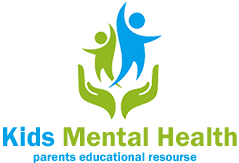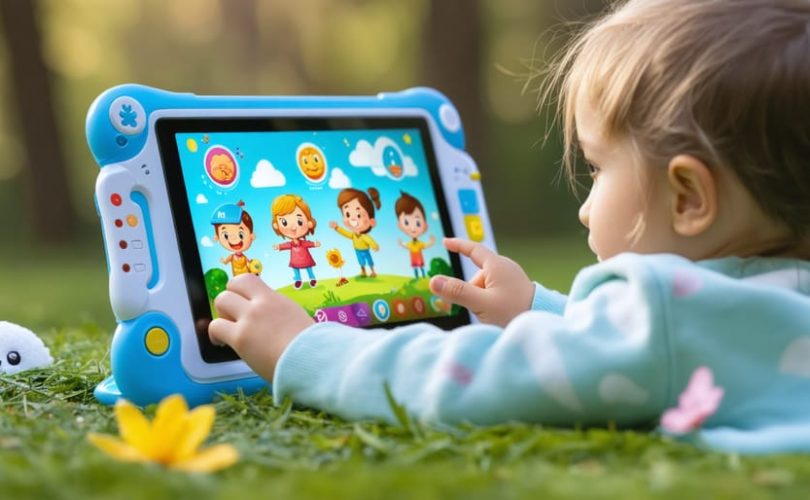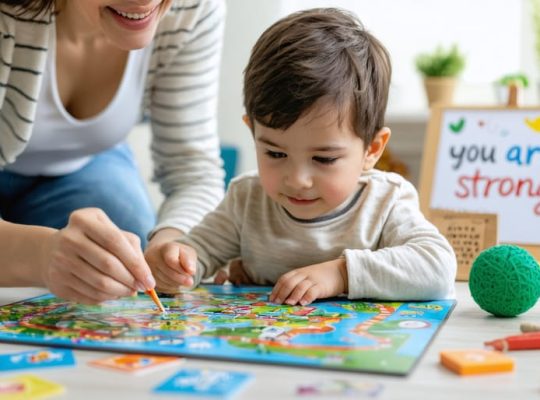Digital intervention has transformed how we approach children’s mental health education, offering powerful new tools for support and healing. As technology becomes increasingly integrated into our daily lives, mental health treatment options have expanded to include innovative digital solutions that meet young people where they are most comfortable.
Recent studies show that 87% of youth turn to digital platforms first when seeking emotional support, making digital intervention not just an option, but a crucial pathway to reaching children in need. From AI-powered mood tracking apps to virtual therapy sessions and interactive emotional learning games, these digital tools provide immediate, accessible support while maintaining the privacy many young people desire.
For parents, educators, and healthcare providers, understanding digital intervention isn’t just about keeping up with technology – it’s about embracing a powerful ally in children’s mental health care. These tools can identify early warning signs, provide consistent support between traditional therapy sessions, and create safe spaces for children to explore their emotions at their own pace.
As we navigate this digital landscape together, it’s essential to approach these interventions with both enthusiasm and careful consideration, ensuring we harness technology’s potential while maintaining the human connection at the heart of mental health support.
Why Digital Tools Matter in Children’s Mental Health Education
Meeting Children Where They Are
Today’s children are digital natives who naturally gravitate toward screens and interactive technology. Rather than fighting against this reality, digital interventions embrace their comfort with technology to create meaningful learning experiences. Children who might be reluctant to engage in traditional therapy or educational settings often show increased enthusiasm when digital elements are incorporated.
As Sarah Chen, a child psychologist, notes, “When we present mental health concepts through familiar digital platforms, children feel more at ease and are more likely to participate actively.” This familiarity creates a bridge between their everyday experiences and important mental health lessons.
Digital tools offer customizable experiences that can adapt to each child’s pace and preferences. Whether through educational games, interactive stories, or mood-tracking apps, these interventions speak the language of modern childhood. They provide immediate feedback and rewards, which can be particularly motivating for young learners.
Furthermore, digital interventions can seamlessly integrate into children’s daily routines, making mental health education feel less like a formal lesson and more like a natural part of their world. This approach helps normalize conversations about mental health and emotional well-being.
Breaking Down Barriers to Mental Health Understanding
Digital interventions are revolutionizing how we approach and understand mental health, making these important conversations more approachable for everyone. Through interactive apps, engaging videos, and online resources, children and adults alike can explore mental health concepts at their own pace and in a safe, judgment-free environment.
One of the most significant advantages of digital tools is their ability to boost your child’s mental health through familiar technology. Rather than facing the potential anxiety of immediate face-to-face discussions, users can first learn and explore through friendly digital interfaces that use age-appropriate language and engaging visuals.
These digital platforms often incorporate storytelling, games, and animations that help explain complex emotional concepts in simple, relatable ways. For instance, many apps use colorful characters to represent different emotions or interactive scenarios that demonstrate coping strategies. This approach helps demystify mental health topics and creates a more comfortable space for children to express their feelings and concerns.
The accessibility of digital interventions also means that support and information are available 24/7, removing traditional barriers like scheduling conflicts or geographical limitations.
Effective Digital Tools for Mental Health Education
Interactive Apps and Games
Interactive apps and games have revolutionized how children learn about mental health, making complex concepts more accessible and engaging. Popular apps like Smiling Mind and Calm Kids offer meditation exercises and mindfulness activities specifically designed for young minds, using colorful characters and rewarding gameplay to maintain interest.
Many of these digital tools incorporate storytelling elements, allowing children to follow characters who face common emotional challenges. For instance, the award-winning game “If… The Emotional IQ Game” helps children develop empathy and social skills through interactive scenarios. Players make decisions that affect story outcomes, learning valuable lessons about emotional regulation and social interaction along the way.
Anxiety-management apps like Mindshift CBT use gaming elements to teach coping strategies, helping children understand and manage their worries through engaging activities. These apps often include progress tracking features, allowing parents and teachers to monitor development while keeping children motivated through achievement systems.
Educational games like “Depression Quest” and “Sea of Solitude” tackle more serious mental health topics for older children and teenagers, presenting these subjects in a sensitive and age-appropriate manner. These games create safe spaces for exploring difficult emotions and learning healthy coping mechanisms.
When selecting mental health apps for children, look for those developed with input from mental health professionals and featuring age-appropriate content. Many offer free versions to try before committing to paid subscriptions, allowing families to find the right fit for their needs.
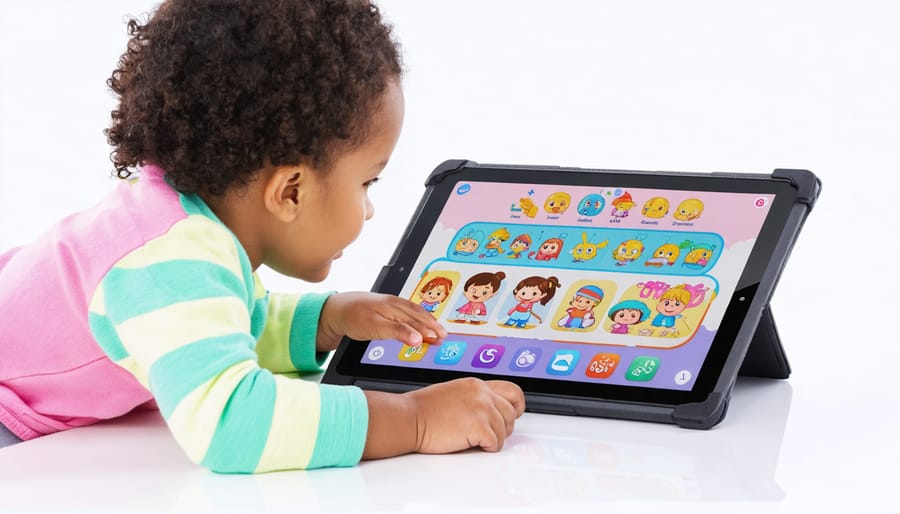
Virtual Learning Platforms
Virtual learning platforms have revolutionized how we approach mental health education, making it more accessible and engaging for children and young people. These digital spaces offer safe, interactive environments where students can learn about mental wellness at their own pace, complementing traditional education’s impact on mental health strategies.
Popular platforms like Headspace for Kids and Smiling Mind provide age-appropriate content through games, animations, and guided activities. These tools help children understand complex emotional concepts in ways that feel natural and fun. For instance, many platforms use animated characters to guide children through breathing exercises or storytelling sessions that teach coping skills.
What makes these platforms particularly effective is their ability to adapt to each child’s needs. Some children might prefer interactive quizzes, while others connect better with animated videos or virtual role-playing scenarios. Many platforms also include progress tracking features, allowing parents and teachers to monitor engagement and understanding.
Teachers report that students often feel more comfortable exploring mental health topics through these digital tools, as they remove the potential awkwardness of face-to-face discussions. Additionally, these platforms typically include parent portals, enabling families to participate in their child’s mental health education journey and continue the learning at home.
Digital Storytelling and Animation
Digital storytelling and animation have emerged as powerful tools for helping children understand and navigate their mental health experiences. Through engaging characters, relatable storylines, and colorful visuals, these digital narratives create a safe space for children to explore complex emotions and challenging situations.
When children watch animated stories about characters dealing with anxiety, depression, or social challenges, they often see reflections of their own experiences. This recognition helps them feel less alone and more understood. For example, a animated series might feature a character learning to cope with test anxiety, showing practical breathing exercises and positive self-talk strategies that young viewers can easily adopt.
Interactive storytelling apps take this approach further by allowing children to make choices for characters, helping them understand the consequences of different responses to emotional situations. These digital stories often include pause points where children can reflect on their feelings and discuss them with parents or caregivers.
The visual nature of animation makes abstract concepts more concrete and accessible. Complex topics like mindfulness, emotional regulation, and social skills become easier to grasp when presented through engaging animated sequences. Many digital stories also incorporate age-appropriate metaphors, such as comparing anxious thoughts to butterflies in the stomach or depicting worry as a rain cloud that can be managed with the right tools.
Parents and educators report that children are more likely to open up about their mental health challenges after engaging with these digital narratives, making them valuable conversation starters for important discussions about emotional wellbeing.
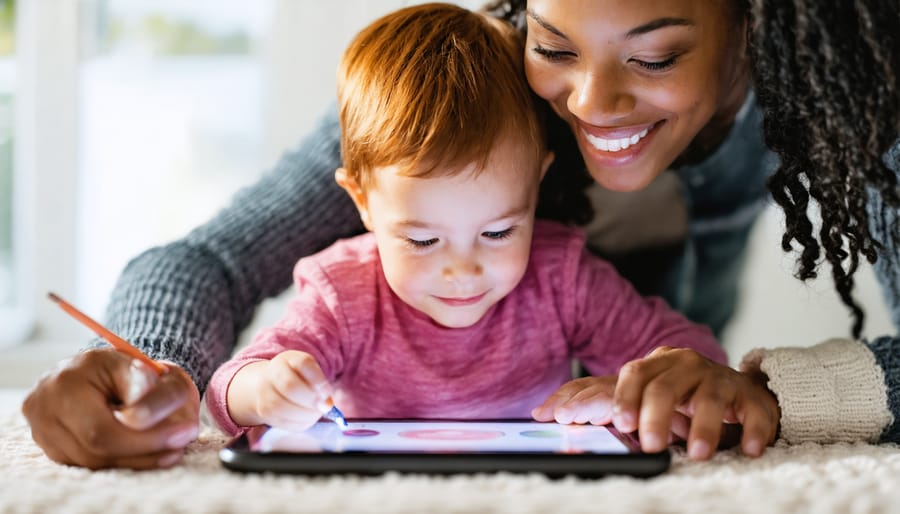
Implementation Strategies for Parents and Educators

Creating a Balanced Approach
Finding the right balance between digital tools and traditional teaching methods is essential for nurturing mental well-being in today’s connected world. Think of it as creating a healthy meal plan – you need a variety of nutrients from different sources to maintain optimal health.
Start by identifying your core teaching methods that have proven successful. These might include face-to-face conversations, art therapy, or group activities. Then, carefully integrate digital tools that complement these approaches rather than replace them. For example, you might use a mindfulness app for five minutes at the beginning of a session, followed by traditional breathing exercises and group discussion.
Consider implementing the “50-30-20 rule”: dedicate 50% of your time to traditional activities, 30% to digital learning tools, and 20% to blended activities that combine both approaches. This framework helps ensure neither method dominates the learning experience.
Here’s what a balanced approach might look like in practice:
– Use digital tools for initial engagement and motivation
– Follow up with in-person discussions to process emotions
– Incorporate technology for progress tracking and goal-setting
– Balance screen time with physical activities and social interaction
– Combine digital creativity tools with traditional art therapy
Remember that every child responds differently to various teaching methods. Stay flexible and adjust your approach based on individual needs and responses. The key is to harness the benefits of technology while maintaining the irreplaceable human connection that’s vital for emotional development.
Monitoring Progress and Engagement
Monitoring how children engage with digital mental health tools is crucial for ensuring their effectiveness. Dr. Sarah Chen, a child psychologist, suggests checking in regularly with your child about their experience using these tools. “Ask open-ended questions about what they’ve learned and how they feel about using the app or program,” she advises.
Create a simple tracking system to record usage patterns and emotional responses. This could be a shared journal or a weekly check-in conversation. Look for signs of positive engagement, such as enthusiasm to use the tool, improved mood after sessions, or spontaneous discussions about learned concepts.
Watch for potential red flags too. If your child shows resistance, appears stressed, or loses interest, it might be time to reassess the approach. Remember, what works for one child may not work for another.
Many digital tools offer built-in progress tracking features. Take advantage of these to monitor:
– Frequency of use
– Time spent on different activities
– Completion of assigned tasks
– Mood patterns and improvements
– Areas where additional support might be needed
“The key is finding the right balance,” shares Maria Thompson, a school counselor. “We want children to benefit from these tools without feeling overwhelmed or pressured.” Consider setting realistic goals together and celebrating small victories along the way.
Regular communication with other caregivers, teachers, or healthcare providers involved in your child’s care can provide valuable insights into the tool’s effectiveness. This collaborative approach ensures everyone is aligned in supporting the child’s mental health journey.
Safety and Best Practices
When implementing digital interventions, safety should always be the top priority. Start by establishing clear boundaries and guidelines for technology use, including screen time limits and appropriate content filters. Dr. Sarah Chen, a child psychologist, emphasizes, “The key is finding the right balance between beneficial digital engagement and protecting children’s wellbeing.”
Always verify the credibility of digital tools and apps before use, ensuring they come from reputable sources and have appropriate privacy measures. Keep personal information secure by using strong passwords and enabling two-factor authentication when available.
Monitor children’s online activities without being intrusive, and maintain open communication about their digital experiences. Create a supportive environment where they feel comfortable discussing any concerns or negative encounters.
Be mindful of potential risks such as cyberbullying, inappropriate content, or excessive screen time. Set up regular check-ins to assess how digital interventions are affecting the child’s mental health and overall development.
Remember to lead by example with healthy digital habits. As Maria Rodriguez, a school counselor, notes, “Children often mirror adult behaviors, so demonstrating responsible technology use is crucial.”
Consider implementing regular digital detox periods and ensure that digital interventions complement, rather than replace, face-to-face interactions and traditional therapeutic approaches. Keep detailed records of which digital tools work best for each child, and be prepared to adjust strategies as needed.
As we’ve explored throughout this article, digital interventions offer powerful opportunities to enhance mental health education and support for children and young people. The combination of engaging technology, evidence-based practices, and accessible tools creates a framework that can reach more children than ever before.
By implementing these digital solutions thoughtfully and safely, we can create supportive environments where children feel comfortable exploring and discussing mental health. Whether through educational apps, online resources, or interactive platforms, technology serves as a bridge to better understanding and managing emotional well-being.
Remember that digital tools work best when integrated as part of a comprehensive approach that includes face-to-face support and guidance. Parents, teachers, and healthcare professionals each play vital roles in helping children navigate these resources effectively.
As technology continues to evolve, so too will the opportunities for digital mental health intervention. By staying informed, maintaining open dialogue, and choosing age-appropriate tools, we can harness these innovations to support the next generation’s mental health journey. Let’s embrace these digital solutions while keeping children’s safety and well-being at the heart of our approach.
